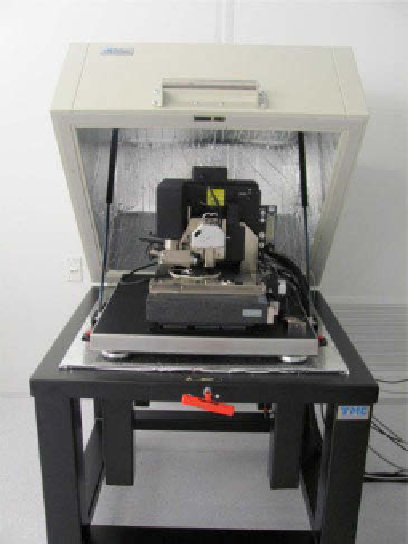Biomedical Engineering Reference
In-Depth Information
figure 6.13
Veeco NanoMan scanning probe microscope.
particle samples for afM analysis are drop casting and spin coating. In cases where
particles do not adhere well to the mica surface, the mica can be treated with an ionic
solution such as magnesium chloride to enhance particle attachment. In comparison
to other tools used for visualization of particles, afM is usually more time-consuming,
requiring minutes instead of seconds for a single scan, and can be more difficult for
amateurs to utilize effectively.
an important property of materials in solutions, zeta potential is a measurement
of the charge exhibited by a particle within a specific solution environment. Zeta
potential can be defined as the potential on a particle at the edge of the electric double
layer and is directly related to the electrophoretic mobility of a particle. Measurements
of electrophoretic mobility and zeta potential are commonly conducted using DlS
systems where the speed of particles moving within an electric field is measured by
monitoring fluctuations in light scattered by the moving particles. It is worth noting
that zeta potential is different from surface charge and is heavily dependent on the
solution environment, including pH and ionic strength. It does, however, provide
critical information on the stability of a particle within a solution environment and
the favorability of electrostatic interactions with other materials. for example, a par-
ticle that has a highly negative zeta potential and hence remains as a stable dispersion
in water may have a neutral zeta potential in phosphate buffer solution and therefore
tend to aggregate.

Search WWH ::

Custom Search